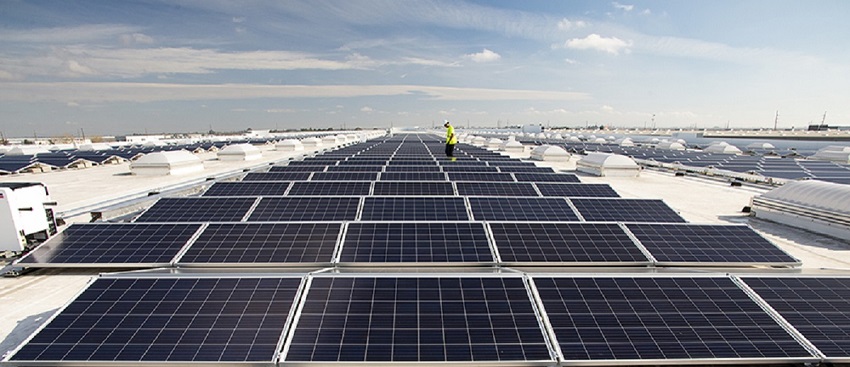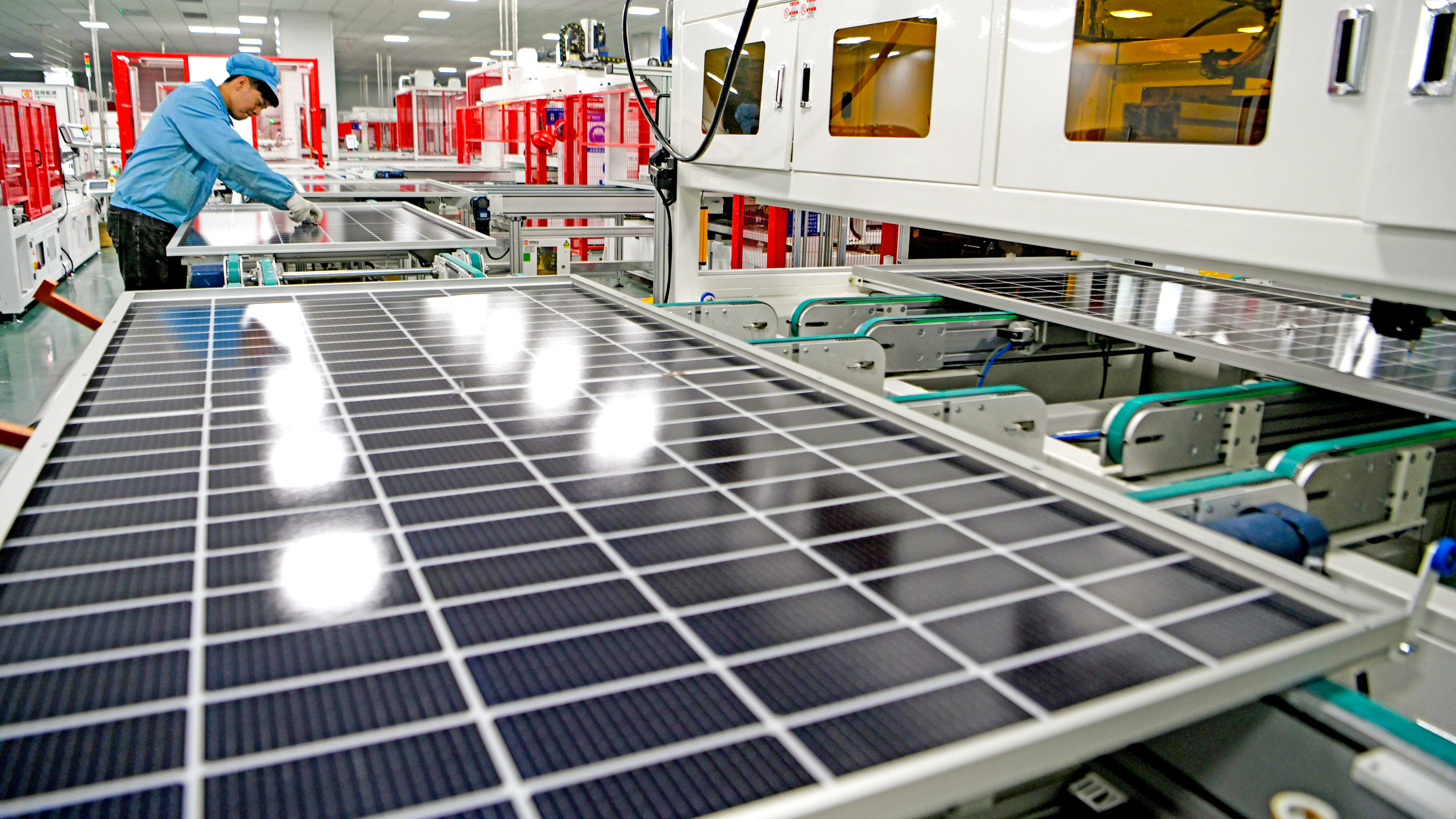Top Guidelines Of Best Solar Panel Company Virginia
Top Guidelines Of Best Solar Panel Company Virginia
Blog Article
Virginia Renewable Energy Company: Lumina Solar Focuses On Supplying Advanced Photovoltaic Solutions For Houses And Organizations
History and Establishing
Have you ever questioned how a solar panel company springs from a mere stimulate of inspiration into a powerhouse of renewable resource? It frequently begins with a vision-- one sustained by a blend of innovation, decision, and a pinch of serendipity. The journey of lots of solar companies mirrors the development of the innovation itself: from large, ineffective panels to sleek, high-efficiency marvels utilizing the sun's bounty.
The Early Days
In the late 20th century, when solar energy was still a specific niche idea, pioneers planted seeds for what would end up being a worldwide movement. Imagine a little workshop filled with curious engineers, relentlessly explore solar batteries. Their enthusiasm was palpable, frequently driven by a desire to combat climate modification and reduce dependence on fossil fuels.
One such anecdote is about a creator who, motivated by a camping journey, understood that even in remote locations, the sun might power important gadgets. This easy observation sparked a company's mission to equalize access to clean energy.
Founding Concepts

- Innovation: Continually pushing the boundaries of solar innovation to enhance effectiveness and resilience.
- Sustainability: Dedicating to environment-friendly manufacturing and reducing carbon footprints.
- Availability: Making renewable energy solutions budget-friendly and useful for daily users.
Milestones in Growth
| Year | Key Event |
|---|---|
| 1985 | Company established in a small garage, concentrating on research study and development. |
| 1995 | Very first industrial photovoltaic panel product launched, getting regional attention. |
| 2005 | Expanded to worldwide markets, welcoming global sustainable energy goals. |
| 2015 | Presented innovative photovoltaic panel technology with boosted energy conversion. |
Isn't it interesting how these incremental steps, typically overlooked, shape the energy landscape today? The photovoltaic panel business story is not practically innovation; it has to do with a relentless mission for a brighter, cleaner future.

Innovations in Photovoltaic Panel Technologies
Ever observed how some photovoltaic panels gleam brighter and last longer? It's not magic; it's the science of photovoltaic efficiency. Modern photovoltaic panel business invest greatly in innovations like bifacial cells, which catch sunlight from both sides, improving energy harvest without broadening roof area. Have you ever questioned why some panels carry out much better on cloudy days? That's due to advances in thin-film solar innovation, which prospers under diffused light conditions.
Item Variations Tailored to Distinct Needs
One size never ever fits all. Solar panel providers now provide:
- Monocrystalline panels for maximum efficiency and smooth aesthetic appeals, perfect for space-constrained roofs.
- Polycrystalline panels, which provide a cost-effective alternative without sacrificing too much output.
- Building-integrated photovoltaics (BIPV), merging solar tech seamlessly into architectural components like windows and exteriors.
Picking the ideal product isn't simply about upfront cost; it's about matching your environment, energy objectives, and long-lasting cost savings. For example, homes shaded by trees need panels that master low-light circumstances, something numerous neglect till energy costs climb up all of a sudden.
Technical Tips for Ideal Selection
- Assess the temperature coefficient-- lower worths imply panels lose less effectiveness on hot days.
- Search for panels with boosted anti-reflective coatings to maximize light absorption.
- Consider the panel's service warranty not just for problems, however for guaranteed power output over years.
- Don't underestimate the significance of the inverter technology combined with the panels; it can make or break your system's efficiency.
Beyond Panels: Emerging Patterns
Envision solar panels that adjust their angle instantly to chase the sun-- tracking systems are becoming more available, increasing yield considerably. Or solar tiles that blend invisibly into your roofline, changing your home into a silent, self-sufficient power generator. These innovations are reshaping what a photovoltaic panel company uses-- not simply items, but integrated energy options.
Market Existence and Global Operations
Ever question why some solar panel companies appear to grow up in every corner of the world while others hardly make a ripple? The distinction lies not just in innovation but in mastering the art of navigating varied markets. Broadening internationally resembles planting seeds in different environments-- you need to understand each environment's unique conditions to thrive.
Take, for example, the complex dance of logistics and supply chain management. Delivering panels halfway across the world isn't practically range; it has to do with timing, customs, tariffs, and adjusting to regional need variations. A company with robust international operations prepares for these variables, making sure panels show up on schedule without pumping up costs. This foresight is no little task and often separates industry leaders from fans.
Secret Techniques for Expanding Market Existence
- Localized production: Establishing production centers near target markets lowers shipping delays and import complexities.
- Strategic collaborations: Teaming up with local firms accelerates market penetration and builds trust.
- Adaptive item style: Tailoring solar panel tech to weather, sun intensity, and infrastructure subtleties boosts performance and approval.
What about the human aspect? Solar panel business operating internationally need to reconcile cultural distinctions and regulatory nuances without forgeting their core mission. For instance, what operate in a sun-drenched desert may fail in a damp seaside region. Often, the most innovative option is just listening-- soaking up regional insights to improve technology and technique.
Experts frequently encourage a phased rollout instead of a shotgun expansion. Why risk overextension when determined growth builds sustainable momentum? Scaling sensibly indicates balancing ambition with operational durability - Commercial Solar Panels Virginia. In the race for sustainable energy supremacy, persistence can be as valuable as speed.
Environmental Impact and Sustainability Practices
When photovoltaic panels initially emerged, numerous assumed they carried zero environmental baggage. The reality is more nuanced. The production of photovoltaic cells involves rare earth metals and energy-intensive procedures, which can leave a sizable carbon footprint before the panels even reach rooftops. The real environmental cost depends greatly on the sustainability practices utilized by the photovoltaic panel business throughout the lifecycle of their products.
How frequently do we pause to consider what happens to solar panels at the end of their helpful life? Unlike batteries or electronics, photovoltaic panels can last 25-30 years, however disposal and recycling pathways stay underdeveloped in numerous regions. A company committed to minimizing ecological harm will have a robust strategy for recycling photovoltaic materials, salvaging important silicon, glass, and metals to prevent land fill accumulation.
Key Sustainability Methods
- Using low-impact manufacturing methods that minimize water and energy intake.
- Carrying out closed-loop systems to recycle production waste back into new panels.
- Participating in transparent supply chain audits to guarantee ethical sourcing of basic materials.
- Designing panels for easier disassembly to aid future recycling efforts.
It's worth keeping in mind that some solar companies have actually pioneered innovative approaches, such as incorporating naturally degradable parts or using less toxic chemicals throughout fabrication. This not only reduces ecological stress but also sets a precedent for the market. The question remains: can read more the solar industry truly pivot towards a circular economy model without compromising performance or price?
Expert Tips for Evaluating Sustainability
- Inquire about the business's dedication to carbon-neutral production and whether they offset emissions.
- Investigate if they partner with accredited recycling centers committed to photovoltaic panel waste.
- Try to find openness reports detailing ecological impacts and sustainability objectives.
- Think about the durability and service warranty of panels as an indirect measure of resource efficiency.
In the end, selecting solar power must suggest more than just slashing electrical power costs; it has to do with supporting a future where energy is harvested properly and waste is thoughtfully managed. Photovoltaic panel business that accept this viewpoint not just illuminate homes however also cast a brighter light on sustainable development.
Report this page